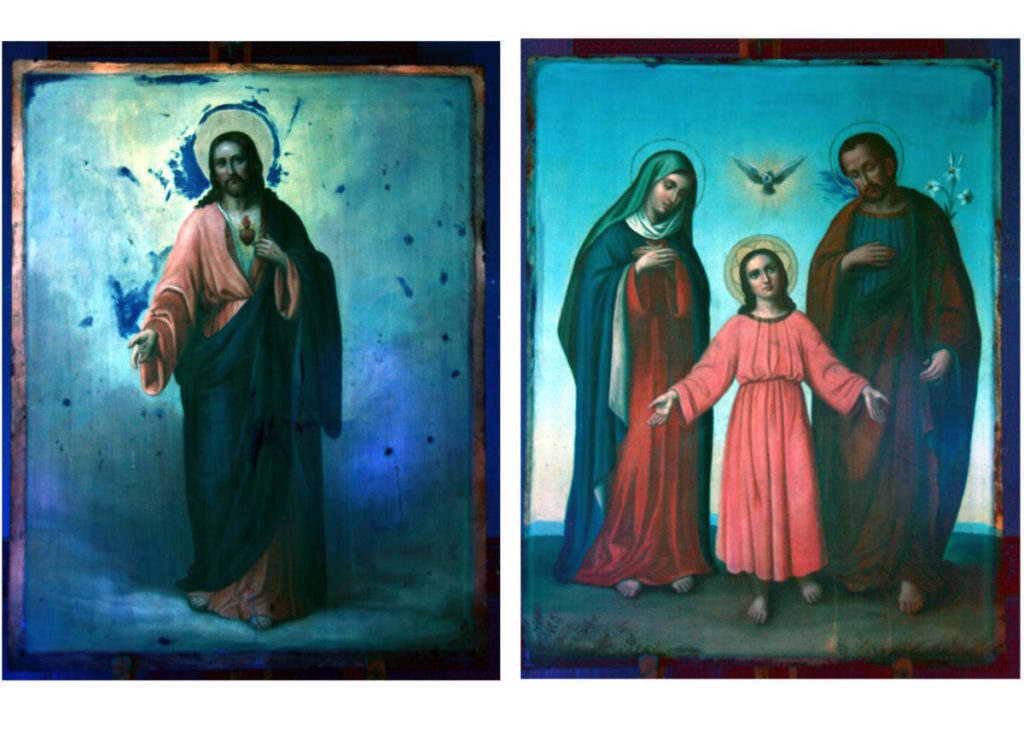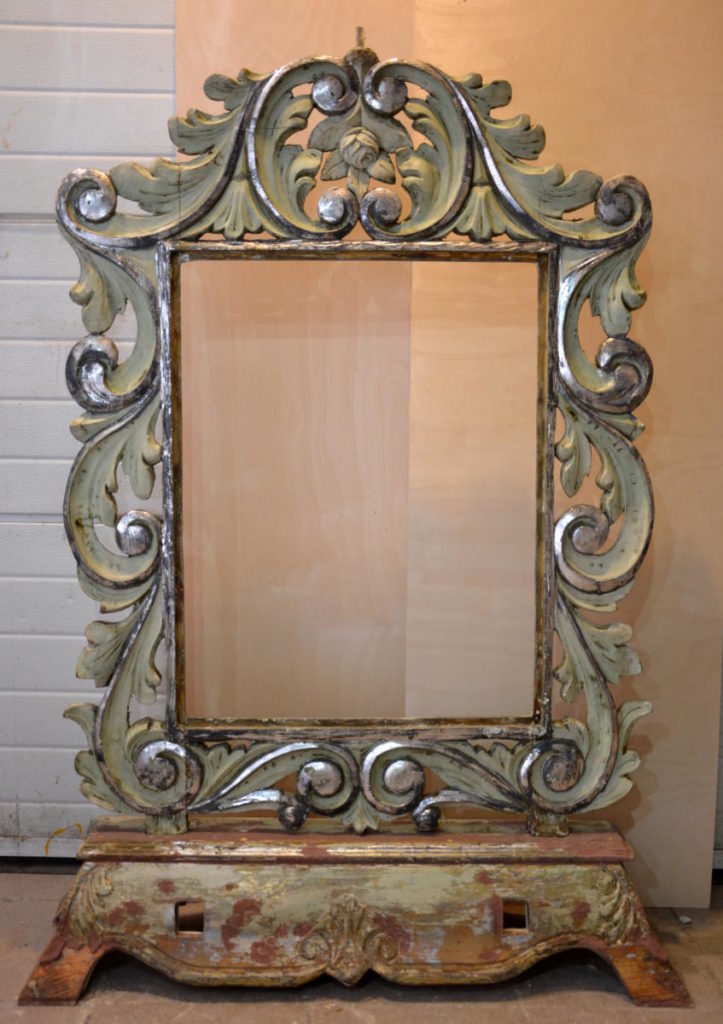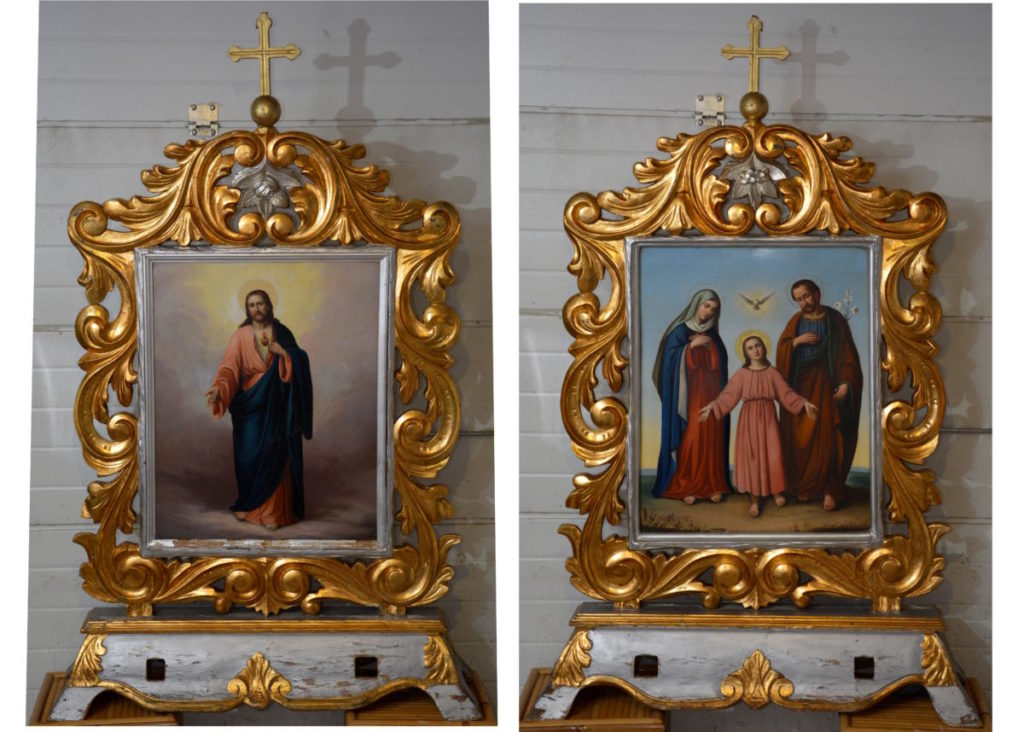
Church of Holy Trinity in Mikstat
RENOVATION OF THE FERETORY FROM THE CHURCH OF HOLY TRINITY IN MIKSTAT
A feretory which is a portable double-sided processing painting from the church of Holy Trinity in Mikstat has on its front an image of the Heart of Jesus, and on the back the Holy Family. The paintings were placed in a decorative, richly ornamented frame.
The condition of the object was bad, first and foremost its fragile construction needed reinforcement. The removal of repainting and creation of new gilding were necessary. Broken elements of decorations could be seen, as well as topical mechanical damages, cracks and abrasions of painting and metal layers. Damage caused by wood pests could also be noticed.
The aim of conservation was to prevent the processes of destruction and recreate the original technical and aesthetic values of the feretory.


In the first stage, the condition of the object was documented before the renovation in the descriptive, picture and photographic form, as well as measuring of all elements. Mobile or loose elements were disassembled are transported to the workshop. Double-sided painting was disassembled and photographed in the daylight and UV light to reveal the luminescence of the painting layer. Photograph in the UV light showed that the surface of the paintings was covered with a varnish, and some of its parts had been retouched or repainted. The layer of darkened varnish was ablated and washed with a mixture of organic solvents selected on the basis of primary tests. The retouch of losses was made with the use of oil and resin based paints directly on the surface of metal. The whole surface was protected with varnish.
The construction of the feretory was dismounted to a degree that allowed following procedures which were impregnation with the use of resin, the removal of loosened unoriginal painting layers, further carpentry works. Improper putties were removed, glued parts were disconnected and fractures of the elements were cleaned. Unoriginal repainting and gilding were removed from the ornaments. This procedure was done with the use of compresses moistened with a mixture of organic solvents on the basis of primary tests. Broken elements were glued with synthetic resins. Fillings and reconstruction of missing fragments were made from linden and pine wood or with the use of a paste with flaked wooden filler of an appropriate colour and an adhesive based on synthetic resin.

The next stage involved remounting all elements and sculptured ornaments with the use of wooden pegs or stainless steel bolts. At the bottom part of the base, two slots were embedded so that the feretory could be mounted in place at the church or for transport. The crowning cross was placed on a screw which allowed its easy disassembly. Surfaced for metallization were isolated with shellac. Gilding was made with 23 ¾ karat leaf gold with acrylic mixtion technique and silver metallic foils. Smooth surfaces were painted with oil-resin based paints.
The final stage was finishing the descriptive and photographic documentation of the works, which included the instruction manual of storing and using the object.





